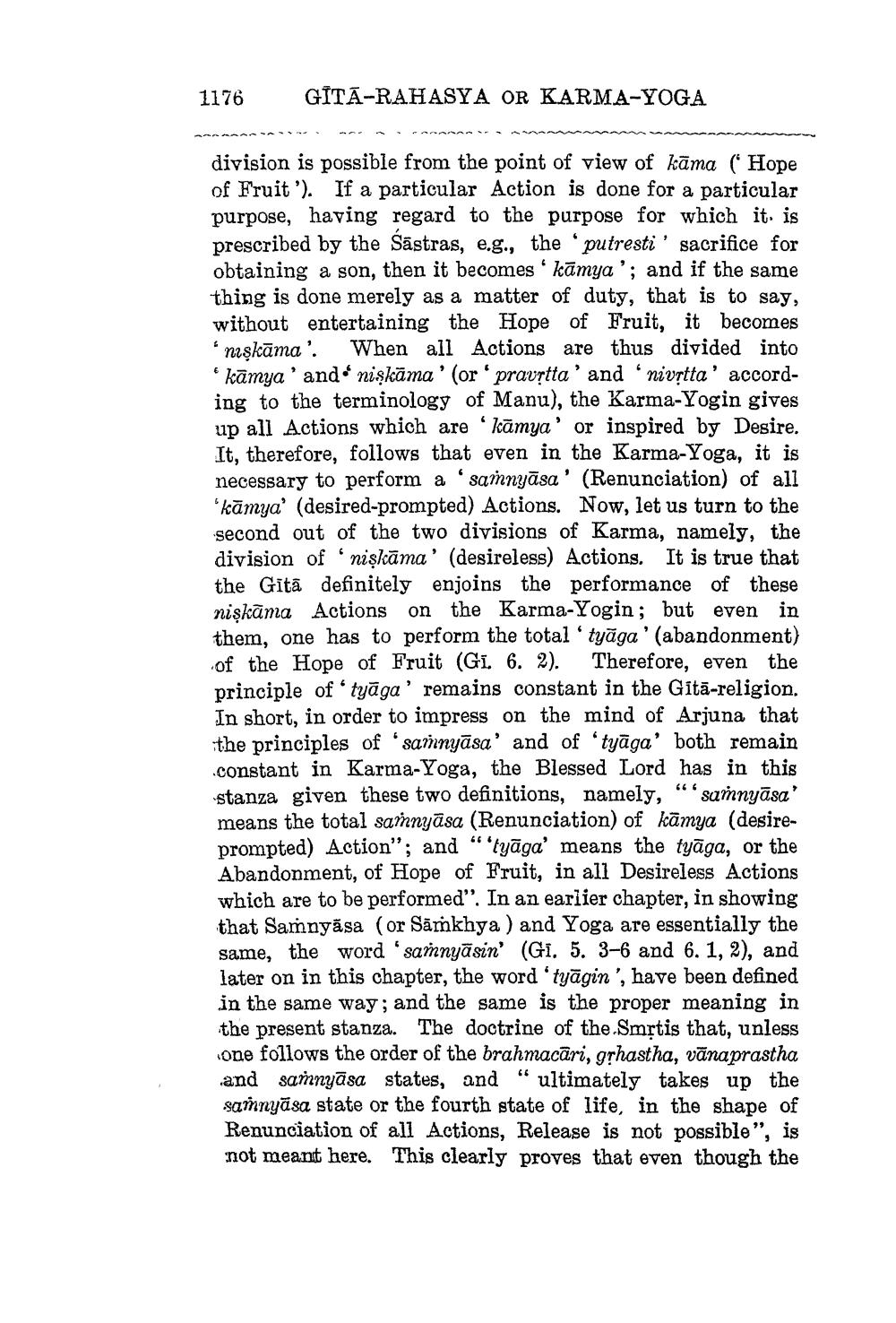________________
1176
GITA-RAHASYA OR KARMA-YOGA
division is possible from the point of view of kāma ( Hope of Fruit '). If a particular Action is done for a particular purpose, having regard to the purpose for which it is prescribed by the Sāstras, e.g., the 'putresti' sacrifice for obtaining a son, then it becomes kāmya’; and if the same thing is done merely as a matter of duty, that is to say, without entertaining the Hope of Fruit, it becomes 'nışkāma'. When all Actions are thus divided into * kāmya' andó nişkāma' (or ' pravștta' and 'nivrtta' according to the terminology of Manu), the Karma-Yogin gives up all Actions which are ‘kāmya' or inspired by Desire. It, therefore, follows that even in the Karma-Yoga, it is necessary to perform a 'samnyāsa' (Renunciation) of all kāmya' (desired-prompted) Actions. Now, let us turn to the second out of the two divisions of Karma, namely, the division of ' nişkāma' (desireless) Actions. It is true that the Gitā definitely enjoins the performance of these niskāma Actions on the Karma-Yogin; but even in them, one has to perform the total 'tyāga' (abandonment) of the Hope of Fruit (Gi. 6. 2). Therefore, even the principle of 'tyāga' remains constant in the Gītā-religion. In short, in order to impress on the mind of Arjuna that the principles of 'sannyāsa' and of 'tyāga' both remain .constant in Karma-Yoga, the Blessed Lord has in this stanza given these two definitions, namely, “sanyāsa' means the total sainyāsa (Renunciation) of kamya (desireprompted) Action"; and “tyāga' means the tyāga, or the Abandonment, of Hope of Fruit, in all Desireless Actions which are to be performed". In an earlier chapter, in showing that Samnyāsa (or Samkhya ) and Yoga are essentially the same, the word 'samnyāsin' (Gi. 5. 3-6 and 6. 1, 2), and later on in this chapter, the word 'tyāgin', have been defined in the same way; and the same is the proper meaning in the present stanza. The doctrine of the Smrtis that, unless one follows the order of the brahmacāri, grhastha, vānaprastha and sannyāsa states, and “ ultimately takes up the sainyāsa state or the fourth state of life, in the shape of Renunciation of all Actions, Release is not possible", is not meant here. This clearly proves that even though the




